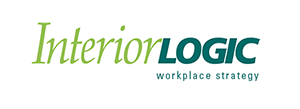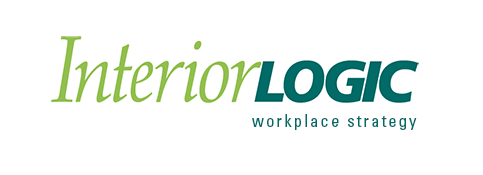Transparency, instantaneous online gratification and hyper-personalized experiences are aspects the modern hotel guest has come to expect and demand. Comparably, the same is true for today’s employee. We are witnessing a power shift across industries from the traditional hierarchy which favors high-ranking executives to the individual, whether that be in corporate or hospitality environments.
This trend has been kickstarted by a younger generation who have found their voice early and prioritized different experiences with more personal power than generations before them. They demand the power to make important decisions about not only their personal life but their career as well.
With this shift, their influence is felt in physical design, and, more importantly, what that design signifies about their workplace culture.
The hospitality industry and corporate workplaces are both taking notice as guests and employees alike voice their opinions in an impactful way. People can leave reviews in seconds, search for better options and share their opinion on social media with faults spreading like wildfire—redistributing the control away from the top back to individuals at all levels.
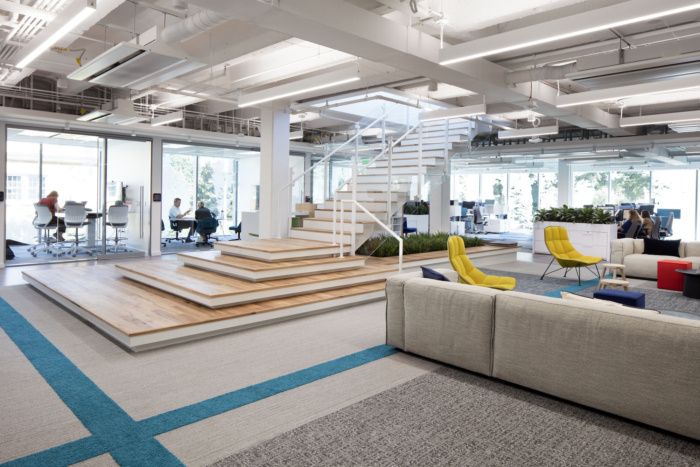
credit: officesnapshots.com
The Modern Employee
With a current unemployment rate of 3.7%, the workforce is no longer forced to compete for jobs. Instead, big corporations must compete for the best talent. With trends such as working remotely and ghosting on the rise, employers are tasked with adapting to meet the demands of the workforce, which means providing more than just a competitive salary.
According to the “State of the American Workplace,” only 33% of employees are engaged at work. And, when employers consider how to equip their workplaces to improve employee performance and perception, they can enhance the emotional and psychological state of employees in relation to their work and workplace.
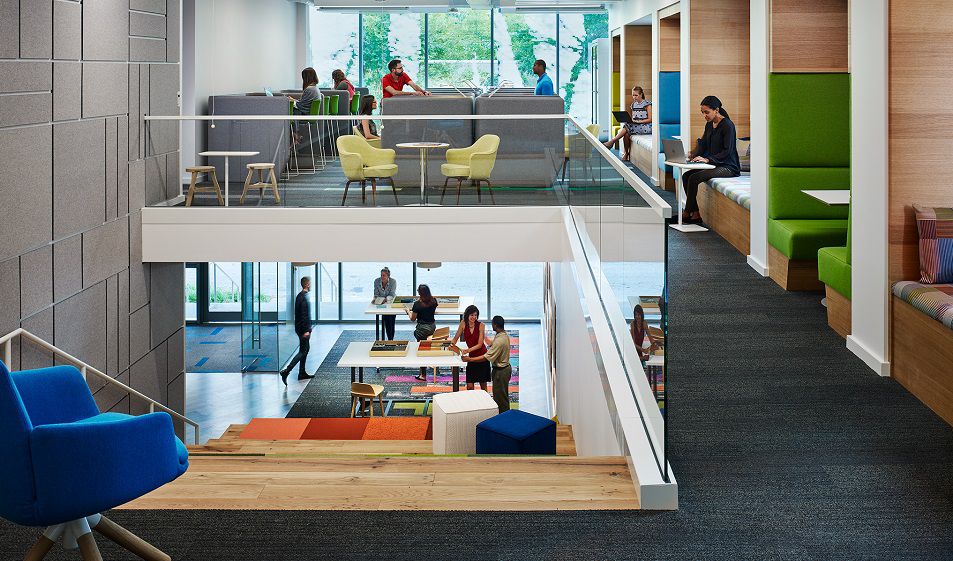
credit: interface.com
As companies begin to cater to the individual employee, it’s important to note the number of millennials in the workforce. Deemed the “purpose over paycheck” generation, millennials are more likely to support a workplace that aligns with their personal values. Making an impact on the world, sustainability and social equality must be woven throughout both work and personal lives.
In addition to establishing core values, the physical space can greatly affect an individual’s perception toward a company’s commitment to their employees’ well-being, as well as making a difference in the world.
By designing offices with sustainability and diversity in mind, breaking down barriers both globally and locally, employees will feel a stronger connection to the overall ethos of their workplace.
Evolving the Workplace
As connectivity becomes the lifeline of our jobs, employees can work anywhere, and if they can work anywhere, how does a corporation attract people to the office? The evolution of hotel design is one source of inspiration. Often, the hospitality design funnel takes cues from residential trends, which then spill over to corporate design aesthetics.
For example, hotel lobbies designed to look like living rooms create a warm and welcoming experience, featuring soft seating and plush carpet. In the workplace, this trend of bringing the living room to life outside the home is seen in the use of rugs, lamps and club chairs. The Boston Consulting Group’s New York office was designed based on a non-corporate look and feel to encourage creative collisions between employees.
Similar spaces, such as Ponce City Market in Atlanta, thrive on combining the concept of live, work and play, allowing occupants to accomplish all of their to-dos throughout the day in one cohesive space. A recent study spearheaded by Google and scientists at Milan design week showcased different spaces that were created to “reflect everyday living spaces.”
The exhibit proved design aspects, such as lighting, sounds, scents and textures, stimulate visitors’ senses, resulting in an overall positive impact on mental well-being. Lobbies and offices designed as living rooms come with the expectation of a flexible workspace, which requires the appropriate technology to support this collision-inspired design.
To encourage efficient and inspired work, offices offer wireless options ranging from focus rooms to collaborative areas. In contradiction to the reputation of open offices, flexible environments align with embracing everyone’s differences, creating a workplace that not only embraces but welcomes healthy age and gender mixes, as well as different work styles for different tasks.
Interface’s global headquarters, deemed Base Camp by employees, exemplifies work choice and people-first design. Within this space, employees have the choice of traditional workstations, communal seating, semi-private cubbies and standing tables.
By killing the traditional “cubicle farm” figuration, the workplace is now in favor of agile workspaces and intentionally crafted for spontaneous interaction.

credit: buildingproductgallery.com
Trends That Are Down to the Last Detail
When analyzing hospitality trends, it is apparent that design has an immense effect on people’s overall mental health and wellness, influencing how an individual perceives their employer’s consideration of their wellness needs. By designing with people in mind, companies can elevate their overall employee experience and satisfaction, increasing their ability to attract new talent as well as improving retention rates within the existing workforce. Based on neuroscience, environmental psychology and endocrinology, biophilic design can reduce stress, enhance creativity and clarity of thought, and improve well-being.
According to a study on biophilic design in hospitality, brands that embrace nature as a differentiator from their competitors are likely to establish a visual connection right away with the guests, resulting in a higher association with positive guest experience. Ways to incorporate these hotel design tactics in the corporate setting include:
- Green walls, trees, plants or water visible throughout space
- Nature-inspired carpet patterns, colors and textures
- Blur indoor-outdoor transitions
- Furniture using natural finish materials, such as wood, stone and leather
- Natural lighting and lighting that supports circadian rhythms
Health and wellness are also at the forefront of guests’ must-haves when selecting a hotel. Similar to a hotel offering spa and fitness options, corporations should consider providing their employees with amenities throughout the office space that support health and wellness.
Healthy snack bars, coffee bars, mother’s rooms, meditation rooms and fitness spaces are just a few amenities companies can encourage a healthy lifestyle within their workforce. Pet-friendly offices also offer a one-up experience, allowing employees to bring everyone’s heart rate down throughout the day with a wagging tail and a wet kiss.
By embracing the new wave of office design, corporations can place greater importance on the individual. As hotels value guests’ time spent at their establishment, companies that invest in their employees’ health, interests and needs will see a return on investment from their workforce.
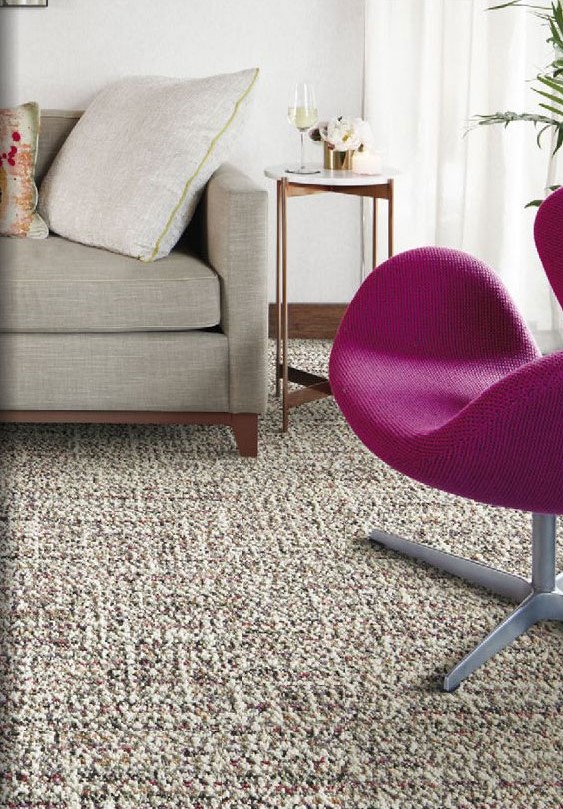
credit: interface.com
ABOUT US
At InteriorLOGIC, we build work environments. From our home office in Madison, WI our award-winning commercial interior design team focuses on creating spaces that work. We continually work to improve the end user experience with each design and our team is well-suited for challenging projects including LEED certification and sustainability projects. For more information about our business and approach, please visit www.intlogic.com.
